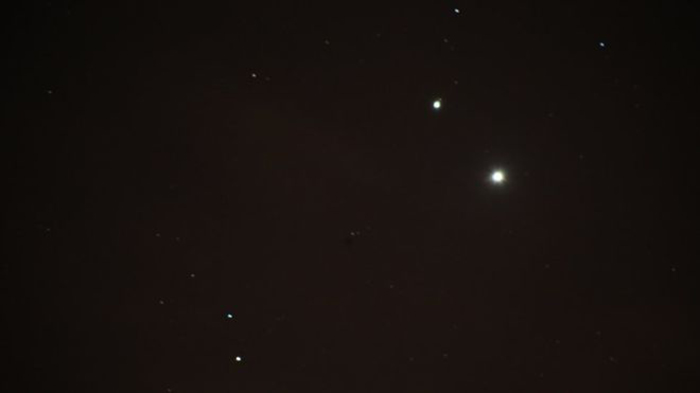The planets are best seen before sunrise and will form a particularly neat triangle on Thursday.
The next time the planets cluster this close together will be in January 2021.
But how do would-be astronomers see the spectacle before it is gone?
How do I see it?
The planets can be seen without equipment, towards the east. The best time to see them is just before sunrise because at this time they are high in the sky but it is dark enough to see them. Binoculars and telescopes can be used to see the planets in more detail.
Which planet is which?
The easiest planet to see is Venus, which is about 12 times brighter than Jupiter. Jupiter appears second brightest.
Mars is about 250 times less bright than Venus. To see Mars it may be necessary to get up an hour before sunrise.
Where can I see them?
Wherever there are clear skies.
Where you are in the world does not affect how the planets appear.
Within the UK, said BBC weather presenter Alex Deakin, northern Scotland and the north-west and south-east of England would have the clearest weather at the beginning of the week, while Wales and south-west England would be best later in the week.
He added that all parts of the UK should have at least one clear morning this week.
How long will they visible?
The planets have been visible together from 23-24 October and will remain visible until at least the end of the week, according to Affelia Wibisono, astronomer at the Royal Observatory in Greenwich.
On Wednesday and Thursday, as Venus - because it is closer to Earth - passes Jupiter and "catches up" with Mars, the planets will form a flattened triangle, with Venus almost directly between the other two planets.
Is a grouping of this kind unusual?
Two planets appear together in this way at various times throughout the year, but it is much rarer to have three grouped together.
The fact the planets can be seen without binoculars or a telescope is one of the things that makes this grouping special, Ms Wibisono said. By contrast, it would not be possible to see a grouping of Uranus, Neptune and Saturn without equipment, she said.
Why are the planets grouping together?
Each planet is tracing out its own orbit of the Sun, and each takes a different amount of time to do so. This week, they have reached a point where - as seen from Earth - they line up in our sky.
Are the planets actually closer to each other than usual?
No. In fact the planets remain millions of kilometres apart and the appearance of them being close together is a consequence of their relative positions in the Solar System. The Sun acts as a torch lighting them up, and from our vantage point on Earth it is difficult to see the "depth" of space that separates the planets.
More about:
















































